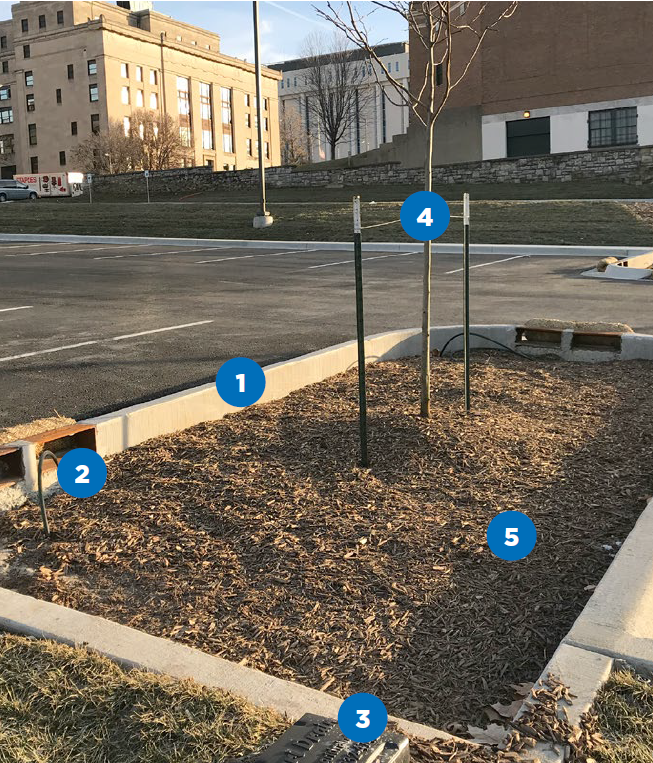The new Juvenile Justice Center is being developed to provide efficient and effective services for juveniles in a more positive environment. The current Juvenile Detention Center is located in the same facility as adult inmates, which has created operational challenges and overcrowding issues in the past.
The UG went under contract with Newkirk Novak Construction Partners in late 2017 for the new Juvenile Justice Center. In early 2018, the UG IOCP team met with the lead architecture design firm, TreanorHL, to discuss plans for managing stormwater at the new site. The original plans included traditional stormwater installations, which risked increasing system overflows and backups, both of which could be detrimental to the community. The team strategized ways to incorporate green stormwater infrastructure into the design. Based on schedule, IOCP efforts and our previous stormwater experience, it was decided that the IOCP team would provide the green stormwater infrastructure design and collaborate with TreanorHL to incorporate it into the overall design plans. This project serves as the UG’s first opportunity to analyze the impact of green stormwater infrastructure in the area as part of the federal consent decree improvements.
.png?width=175&name=azco-white-logo-2020%20(1).png)
